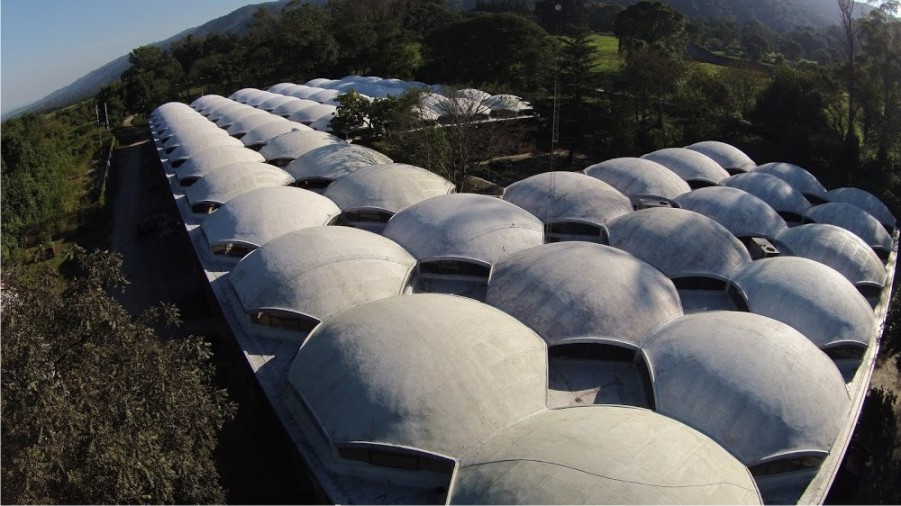
INSTITUTIONAL
In 2015, the Institute of Regional Ecology (IER) joined CONICET, transforming itself into an Executing Unit of double dependency UNT (National University of Tucumán)-CONICET.
Its main objectives are:
- Study the regional, community and population ecology in natural, urban and agro-ecosystem environments, with an emphasis on the Neotropical subtropics.
- Shareknowledge about ecology and the interactions between nature and society with the general public .
- Provide advice for the management of ecosystems and the solution of ecological problems.
- Promote interactions with institutions and people from the region and abroad.
- Promote sustainable development and conservation of regional diversity and environmental services of natural ecosystems.
Main lines of research:
- Urban ecology.
- Carbon balance of temperate and subtropical forests of South America under climate change and land use.
- Development of native tuberous plants of northwestern Argentina with medicinal potential.
- Ecology, distribution and life history of birds of the main ecosystems present in northwestern Argentina (Chaco, Yungas, Puna and Monte).
- Land use change and efficiency of land use change in Latin America and northwestern Argentina.
- Invasion by exotic plant species.
- Vegetation dynamics.
- Plant-animal interactions in natural and agricultural systems.
- Climate change in high mountain wetlands.
The IER is organized internally into thematic/methodological oriented WORKING GROUPS:
- BIRD ECOLOGY AND PLANT-ANIMAL INTERACTIONS
Responsible: Pedro Blendinger.
Reproductive biology. Functional diversity. Evolutionary ecology. Movement ecology. Trophic ecology. Mutualistic and antagonistic interactions (herbivory, granivory, pollination, seed dispersal). Spatial patterns of habitat distribution and habitat occupation. Interaction networks. Ecosystem services.
- VEGETATION DYNAMICS
Responsible: Cecilia Blundo and Agustina Malizia.
Plant demography. Carbon balance in forests. Ecology of forest communities. Vegetation - disturbances - climate change relationships.
- URBAN ECOSYSTEMS
Responsibles: Ezequiel Aráoz and Carolina Monmany.
Spatial patterns of plant productivity. Solid waste management. Biodiversity. Ecosystem services monitoring. Decision making.
- TRANSFORMATION OF SOCIO-ECOLOGICAL SYSTEMS IAT AGRICULTURAL FRONTIERS
Responsible: Ignacio Gasparri.
Agricultural frontiers and sustainable development. Drivers of expansion of productive activities. Relationship between society and nature. Role of actors and Institutions. Biodiversity and ecosystem services in the context of transformation of the territory.
- SOCIOECOLOGY OF THE PUNA
Responsible: Ricardo Grau.
Ecology and biogeography of high mountain wetlands. Interactions between land use and climatic changes in mountain ecosystems. Mining and livestock in the Puna.
- ECOSYSTEM AND AGRO-ECOSYSTEM SERVICES
Responsibles: Natacha Chacoff and Roxana Aragón.
Pollinators and pests of agricultural crops and their relationship with the native forest. Soil hydrology. - GENDER AND ITS INTERSECTIONS IN ECOLOGY AND THE SCIENTIFIC SYSTEM IN GENERAL
Responsibles: Silvia Lomáscolo and M. Gabriela Núñez Montellano.Topics: Gender inequities in ecology. Distribution patterns of gender inequities, their problems and perpetuating mechanisms. Actions and public policies with a perspective of inclusion and expanding opportunities for the development of a more equal and diverse scientific community. - SOCIO-ECOLOGY AND VERTEBRATE CONSERVATION (PATA-NOA)
Responsibles: Sofía Nanni and Ramiro Ovejero.
Functional ecology, socio-ecology, and biodiversity conservation from Patagonia (PATA) to Northwestern Argentina (NOA). Evaluation of human-wildlife conflicts. Habitat and biodiversity studies.
The IER maintains an active interaction with other national and international institutions. Its members have received national (e.g. CONICET, CIUNT, FONCyT, Fundación Antorchas) and foreign (e.g. Fundación Fullbright, World Wildlife Fund, National Geographic Society, International Foundation for Science, International Union for Nature Conservation, among others) scholarships and subsidies, access to courses and the completion of doctorates, masters and bachelor's degrees in both national and international universities (e.g. New York, Missouri, North Carolina, Massachusetts, Colorado, Florida, Puerto Rico, Wales, Manaus, Mexico, Costa Rica). Within the framework of exchange with other institutions, the IER receives groups of students from other universities in Argentina and abroad.
Background
In order to implement research, action, conservation and development activities in subtropical mountain forests, the Yungas Ecological Research Laboratory (LIEY) was created in 1992, under the Department of Natural Sciences and the Miguel Lillo Institute (FCN-IML) of the National University of Tucumán. It began as an institution dedicated to research and was involved in numerous pioneering projects in the region, the main results of which are synthesized in three books (1) ( Brown and Grau 1993, 1995; Kappelle and Brown 2001). In 2009, as a result of its institutional growth in both thematic diversity and geographical scope of its actions, it gave rise to the Institute of Regional Ecology, maintaining its dependence on the FCN-IML.
Since its creation, it has developed various research topics linked mainly to the interests of its members, such as forest dynamics, plant-animal interactions, population and community ecology, landscape fragmentation, ecology of invasive exotic species, plant ecophysiology, biogeography, and in vitro plant growth and multiplication. Many of these studies were carried out in association with other researchers and research centers of national and international universities. Simultaneously, the IER has developed different types of educational activities and training of human resources. The institution is extremely active in organizing workshops, meetings, seminars and conferences, teaching undergraduate subjects as well as undergraduate, postgraduate and outreach courses.
FOOTNOTE
- Brown, A.D. And H. R. Grau. 1993. Nature and man in the Mountain Jungles. GTZ Project. Agroforestry development in rural communities in northwestern Argentina. 143 pp.
- Brown, A.D. and H. R. Grau. 1995. Research, conservation and development in subtropical mountain forests. Laboratory of Ecological Investigations of the Yungas. 270 pp.
- Kappelle, M. and A.D. Brown. 2001. The Neotropic Cloud Forest. National Institute of Biodiversity, Costa Rica 698 pp.